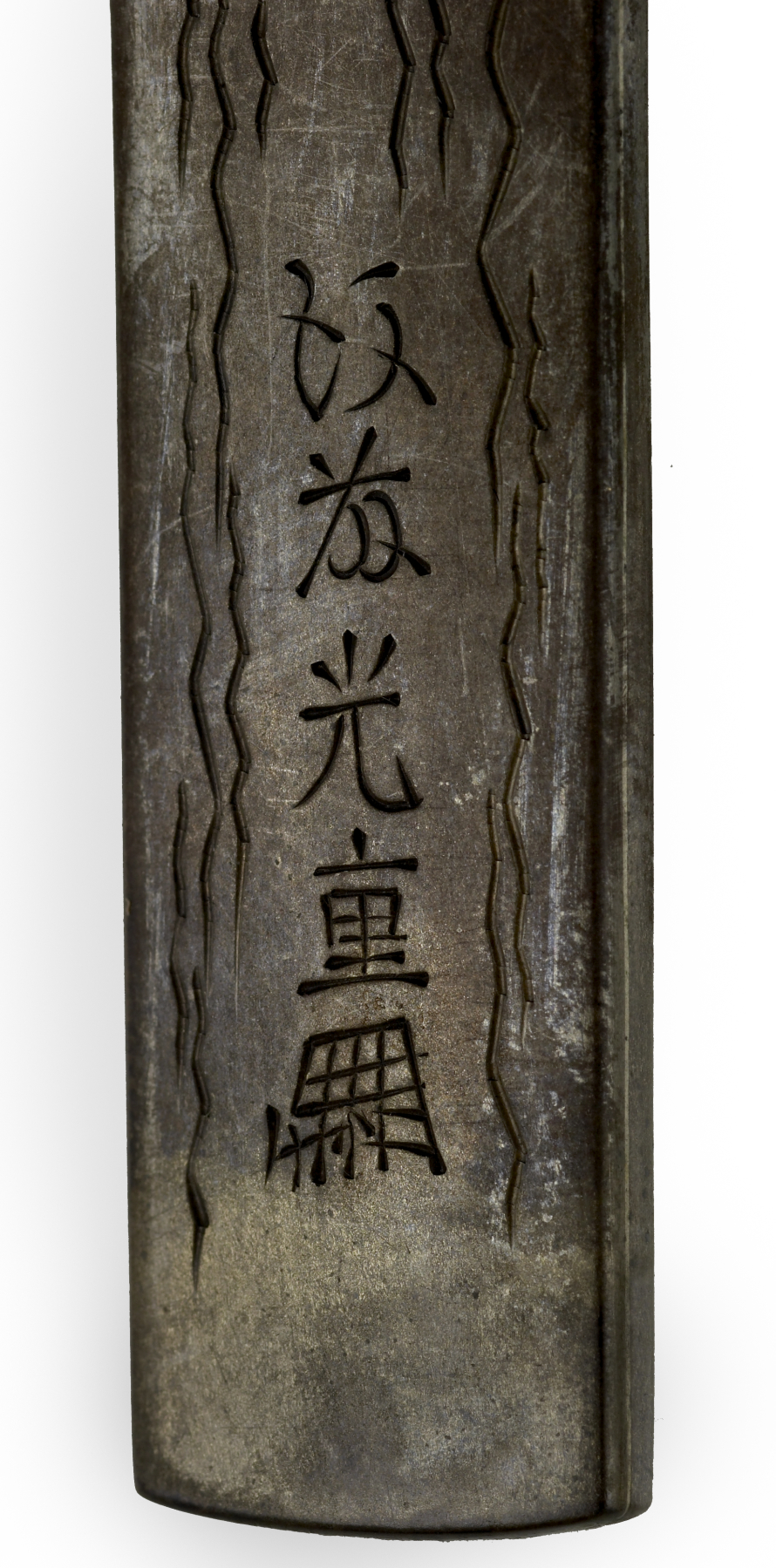Kozuka with the Dôjôji Temple Bell
(Japanese Military Armor)
This design is a scene from the story of Dôjôji temple. The temple bell is shown at the center of the composition. At the right are two monks holding prayer beads and praying. A woman dances at the left, holding a mallet for striking the bell. The monks at Dôjôji used the bell to hide a traveling monk who was trying to escape a woman who was pursuing him. She thought he had promised to marry her and, in her anger at his rejection of her, transformed herself into a dragon. She coiled herself around the bell and killed the hidden monk by breathing fire on the bell. In the noh and kabuki plays about the story, a dancer, who is the spirit of the jealous woman, comes to the temple to celebrate the installation of a new bell. She dances under the bell and when it falls on her she is transformed into a dragon. The dancer is shown here as a fox. Foxes were commonly thought to take the form of a beautiful woman in order to cause mischief.
Inscription
Provenance
Provenance (from the French provenir, 'to come from/forth') is the chronology of the ownership, custody, or location of a historical object. Learn more about provenance at the Walters.
Henry Walters, Baltimore [date and mode of acquisition unknown]; Walters Art Museum, 1931, by bequest.
Geographies
Japan, Kyoto
(Place of Origin)
Japan, Tokyo (Edo) (Place of Origin)
Measurements
3 7/8 in. (9.8 cm) (l.)
Credit Line
Acquired by Henry Walters
Location in Museum
Not on view
Accession Number
In libraries, galleries, museums, and archives, an accession number is a unique identifier assigned to each object in the collection.
In libraries, galleries, museums, and archives, an accession number is a unique identifier assigned to each object in the collection.
51.805






